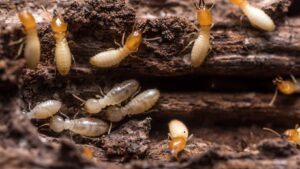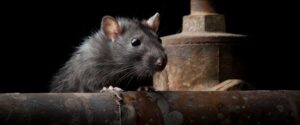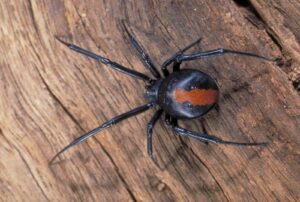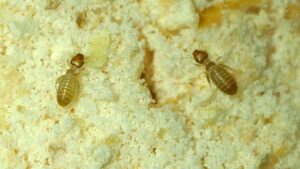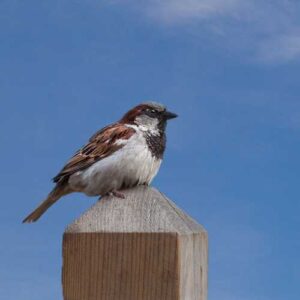Schedorhinotermes Intermedius
Schedorhinotermes intermedius is a termite species commonly found in the Central Coast and Lake Macquarie, NSW, Australia, causing damage to homes and buildings. These termites, also known as the Banded Termites, are a significant concern for property owners in the region. This comprehensive guide will provide essential information about Schedorhinotermes intermedius, including their identification, behavior, and effective prevention and control methods to help you protect your property and family from these unwelcome pests.
Identification and Characteristics:
- Size: Workers measure 3-4 mm in length, while soldiers are larger at around 4-6 mm
- Color: Light brown to cream-colored body with darker heads
- Physical Features: Soft-bodied insects with six legs and a pair of antennae
Behavior and Habitat:
Schedorhinotermes intermedius are subterranean termites that create extensive tunnel systems and galleries underground. They forage for cellulose-rich materials, primarily wood, and can cause significant structural damage to homes and buildings if left unchecked.
These termites typically gain entry into homes through cracks in foundations, plumbing, and electrical conduits. They can also construct mud tubes to bridge gaps between the soil and wooden structures, allowing them to access vulnerable areas without being exposed to the open air.
Signs of Infestation:
Detecting a Schedorhinotermes intermedius infestation can be challenging due to their secretive nature and ability to remain hidden within structures. Here are some common signs of infestation:
- Mud tubes: These pencil-thin tubes made of soil and termite feces can be found on foundation walls, piers, or along plumbing and electrical lines, providing termites with a protected route into your home.
- Damaged wood: Infested wood may appear hollowed out or produce a hollow sound when tapped. You might also notice a honeycomb-like pattern in the damaged wood, indicating termite activity.
- Swarming: Winged reproductive termites, or alates, typically emerge in warm, humid weather to mate and establish new colonies. You may see swarming termites near light sources or find discarded wings near doors, windows, or vents.
- Frass (termite droppings): Drywood termites produce pellet-shaped fecal matter, while subterranean termites like Schedorhinotermes intermedius mix their droppings with soil to create mud tubes.
Prevention and Control Methods:
Preventing a Schedorhinotermes intermedius infestation is crucial to protect your property and family from the potential damage these termites can cause. Here are some effective prevention and control methods to consider:
- Eliminate wood-to-ground contact: Termites are more likely to infest wooden structures that are in direct contact with the soil. Ensure that wooden elements of your home, such as siding, porch steps, and deck posts, are at least 6 inches above the ground.
- Reduce moisture: Subterranean termites thrive in damp environments. Repair leaking faucets, pipes, and air conditioning units, and ensure that gutters and downspouts are functioning properly to direct water away from your home’s foundation.
- Seal entry points: Seal any cracks or gaps in your home’s foundation, walls, and around plumbing and electrical lines to prevent termites from entering your home.
- Regular inspections: Schedule professional termite inspections annually to detect and address any infestations early on.
- Chemical barriers: A licensed pest control professional can install a chemical barrier around your property to prevent termites from accessing your home. There are two types of chemical barriers: liquid termiticides and baiting systems. Liquid termiticides are applied to the soil surrounding your home, while baiting systems use strategically placed bait stations to attract and eliminate termite colonies.
- Physical barriers: Installing physical barriers such as metal termite shields, stainless steel mesh, or crushed granite can help prevent termites from entering your home. These barriers should be installed during the construction phase and require regular maintenance to ensure their effectiveness.
- Proper storage of firewood and lumber: Store firewood and lumber at least 20 feet away from your home and elevated off the ground to reduce the likelihood of attracting termites.
- Regular monitoring: Keep a close eye on any signs of termite activity, such as mud tubes, damaged wood, or discarded wings, and take immediate action to address any potential infestations.
Conclusion:
Schedorhinotermes intermedius is a destructive termite species that can cause significant damage to homes and buildings in the Central Coast and Lake Macquarie, NSW, Australia. By understanding the characteristics, behavior, and signs of infestation, homeowners can take proactive measures to prevent and control these unwelcome pests. Remember that early detection and intervention are crucial in minimizing the impact of termite infestations. If you suspect a termite problem, it is essential to consult a licensed pest control professional for a thorough inspection and appropriate treatment options.



